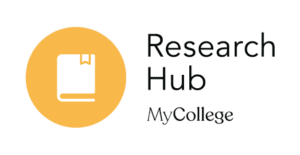Developing teachers’ confidence in enhanced e-learning at an all-through school

Recent times have prompted profound change in education, specifically due to school closures and the migration to e-learning. This paper discusses the need to ascertain staff confidence in e-learning before discussing how e-learning provision may be enhanced.
The majority of literature discusses e-learning from a post-compulsory perspective with limited discussion in compulsory schooling. Initially, e-learning centred on the delivery of content and has expanded to encompass collaborative knowledge construction with the rise of social media (Parchler et al., 2011). A core consideration is the role of the learner; several authors have discussed the need to develop student self-regulation, or the student’s autonomy for effective e-learning engagement (e.g. So et al., 2019).
There are several models of e-learning (see Allay, 2008; Laurillard, 2012). However, the important factor is the instructional strategy adopted opposed to the technology used, for example, engaging students through ‘authentic tasks’ to facilitate complex learning (Herrington et al., 2010). Furthermore, there is a need to ensure that the planning, costing and development are considered prior to the actual teaching methods that are implemented (Garrison and Kanuka, 2004). Consequently this reflective case study has sought to establish teacher knowledge in e-learning and how this could be developed.
An embedded mixed methodological design was adopted to combine predominantly quantitative data with a lesser element of qualitative data through both a staff questionnaire and focus group, across an all-through school (Reception to Year 13). The purpose was to identify staff development requirements.
Key findings
Staff reported that student engagement with e-learning increased with age, possibly due to younger students having less self-regulation and requiring greater parental support. This resonates with the literature discussing the need to develop learner autonomy. Furthermore, just under half of the respondents (n=12, 48 per cent) reported that their e-learning understanding had improved during the enforced lockdown. The majority of staff used a blend of established and bespoke resources with their classes (Table 1).
| Table 1: Predominant type of e-learning use | ||
| Mode of e-learning delivery | Respondents | Aggregated response |
| Mainly established resources (Oak National Academy, etc.) | 12% (n=3) | 12% |
| Mainly bespoke resources (tasks tailored to your class) | 28% (n=7) | 80% |
| A blend of established and bespoke resources | 52% (n=13) | |
| No e-learning resources used | 8% (n=2) | 8% |
In ascertaining approaches to enhancing e-learning, staff were questioned about the use of live streaming of lessons. Four themes were identified through the research with indicative comments included in Table 2.
| Table 2: Summary of staff responses in relation to live-streaming | |
| Theme | Comments |
| Teacher apprehension | Dreading it
I am very uncomfortable about this I don’t think my skills are up to it |
| Impracticality | Family circumstances
Workload for six lessons a day Poor internet connectivity for students and staff |
| Student engagement | Student engagement
Difficult for younger children |
| Pedagogy | Pedagogy, specifically giving feedback
Restricts teaching to a lecture |
Future staff continuing professional development (CPD) needs were ascertained, specifically the degree to which teachers would be comfortable in trying out new approaches. The results are summarised in Figure 1 which highlights a clear taxonomy for skill development.
Figure 1: Taxonomy for enhanced e-learning skill development

Conclusions
E-learning should be viewed as a way of enhancing learning: not a replacement for learning. Furthermore, the core focus should be on instructional strategy opposed to the technology used. From the results, a series of recommendations are forwarded:
- Develop student self-regulation and autonomy.
- Provide sequential training to develop staff confidence, starting from easier e-learning tasks such as quizzes, before progressing to video clips, discussions, and so forth.
- Provide staff guidance on developing bespoke learning, adopting models from Allay (2008) and Laurillard (2012).
To achieve these points, the ADKAR approach (Prosci, 2019) has been adopted to demonstrate how change may be realised (Figure 2). ADKAR is a goal-oriented change management model focusing on the following attributes that are conducive to lasting change: awareness, desire, knowledge, ability and reinforcement.
Figure 2: The ADKAR approach for enhancing e-learning

Share your experiences with educators globally by joining the discussion below. How might these approaches be useful in your context to develop teachers’ confidence with digital and online learning?
References
- Ally M (2008) Foundations of educational theory for online learning. In: Anderson T (ed.) The Theory and Practice of Online Learning (2nd ed). Edmonton: Athabasca University Press, pp. 15-44.
- Garrison R and Kanuka H (2004) Blended learning: Uncovering its transformative potential in higher education. The Internet and Higher Education 7: 95-105.
- Herrington J, Reeves TC and Oliver R (2010) A Guide to Authentic Elearning. New York: Routledge.
- Laurillard D (2012) Teaching as a Design Science: Building Pedagogical Patterns for Learning and Technology. Abingdon: Routledge.
- Pachler N and Daly C (2011) Key Issues in E-Learning: Research and Practice. London: Bloomsbury Publishing Plc.
- Prosci (2019) The Prosci ADKAR Model. Available at: https://www.prosci.com/adkar (accessed 25 May 2020).
- So WWM, Chen Y and Wan ZH (2019) Multimedia elearning and self-regulated science learning: A study of primary school learners' experiences and perceptions. Journal of Science Education and Technology 28: 508-522.










